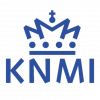GEO-GEO and GEO-LEO Stereo 3D Winds
Stereo observing can provide accurate height assignments for Atmospheric Motion Vectors (AMVs) by purely geometric means as opposed to relying on IR temperatures and a model atmosphere. Our paper presents our work at NOAA and NASA with various pairs of Geostationary (GEO) and Low-Earth Orbiting (LEO) spacecraft, including GOES-R, Himawari-8, Meteosat, Terra, Aqua, JPSS, and S-NPP, in GEO-GEO or GEO-LEO combinations. The method does not require synchronized observing between the two platforms, only a means of time tagging or modeling the times of pixels from each. The method does require accurate Image Navigation and Registration (INR) or geo-registration, which is offered by these systems. We pick one scene from one satellite in which to identify features to use as tracers. Feature matching identifies the locations of each tracer in multi-temporal repetitions from the same satellite and scenes from the other satellite. A retrieval algorithm interprets the apparent disparities in locations between paired scenes as a velocity and a height for each tracer. Same-satellite disparities represent only tracer motion, while cross-satellite disparities combine motion and parallax to provide observability of the height. Knowledge of pixel times allows the retrieval algorithm to jointly retrieve both velocity and height. In the GEO-GEO case, we generally work with a triplet of scenes from one satellite and a doublet from the other. In the GEO-LEO case, only one scene from the LEO satellite is available unless working with MISR when we generally use at least three of its cameras. So far, we have been successful using MISR, MODIS, and VIIIRS as the LEO sensor and ABI, AHI, and SEVIRI as the GEO sensor. The GEO-LEO case serves longitudes where overlapping GEO-GEO coverage is lacking. The method is in principle applicable to multi-LEO combinations, which could enable polar stereo winds to provide a true global capability. Stereo winds can be produced in all matching spectral channels (all 16 in the ABI-ABI case) or similar spectral channels (14 in the ABI-MODIS case). We have applied the stereo winds method to various meteorological case studies, including cold-air outbreaks, deep convection, and smoke plumes, and validated retrievals against clear-sky terrain patterns, rawinsonde observations, and LiDAR. Work is in progress to assess the impact of the potentially more accurate height assignments in stereo-wind products on numerical weather modeling.






